National biomass levels have declined slightly over the past month.
As observed by the BOM, rainfall across southern Australia was well below average, particularly in Tasmania and Victoria.
Higher than average day time temperatures and cooler nighttime temperatures have impacted on pasture growth rates and seen a reduction in TSDM in most states.

Imagery and analysis provided by CiboLabs
Total Standing Dry Matter
While the national TSDM image continues to show significant areas where TSDM amounts exceed 2000 kg/Ha, it is noticeable these areas have contracted in the Northern Territory and areas of the Queensland Gulf.
The seasonal impacts noted by the BOM are very evident in TSDM levels for southeast Australia and southwest Western Australia.
Seasonal Comparison Total Standing Dry Matter
The Seasonal Ranking (based on the past 8-year average Figure 2) have remained largely static since the last update.
Areas of southern Australia, particularly Tasmania, Victoria and South Australia still remain below or well below the average.
The high amounts of TSDM still present in northern Australia continue to be considered above and well above the average.
Fractional Cover (Growth)
Active growth events, as represented by Fractional Cover (Image 3) have contracted significantly in northern Australia as the dry season progresses.
Active growth areas reflect locations with soil moisture and surface water and along coastal regions.
Eastern NSW has seen a contraction due to colder nighttime temperatures and light frosts which have extended into southern states.
Noticeable increases in growth following rainfall have been captured for the south western corner of Western Australia.
Green Total Standing Dry Matter
Levels of green standing dry matter levels (Image 4) have retracted in all states and territories in the past 15 days.
Although large parts of the NT and north Queensland still have amounts in excess of 2000kg DM/Ha, most regions are now averaging 1250kg or below.
Areas of inland NSW, QLD and much of the western state have very low levels of green standing dry matter within their feedbase.
Dead Standing Dry Matter
Dead Standing Dry Matter (Image 5) continues to make a significant component of the total amount of feed on offer, particularly in northern areas.
Large amounts of feed in northern Queensland, the Barkly Tableland and the VRD in the Northern Territory have stopped growing.
This offers some large stands of feed that will be useable with appropriate supplements.
In southern areas the component of dead material within the feedbase remains on balance at around 55% of the total amount, placing some challenges for producers managing over the winter months.
Monthly Ground Cover levels
Ground cover levels remain largely similar to previous observations with no significant alternations noted. (Image 6)
For more localised information including regional level overviews, users are encouraged to explore the Cibo Labs Regional Comparison. This tool provides regional data that may show the impact of localised weather or fire events. A further level of detail for individual properties is available for users who have created an Australian Feedbase Monitor account, which can be accessed both through the MyMLA portal or through the Cibo Labs website.
The Cibo Labs National Comparison can be used to freely access these layers (https://www.cibolabs.com.au/products/national-comparsion/) to view the most recent images from a national, state or catchment level.
This tool can complement the Australian Feedbase Monitor which can also be created within the Cibo Labs Web Site www.cibolabs.com.au

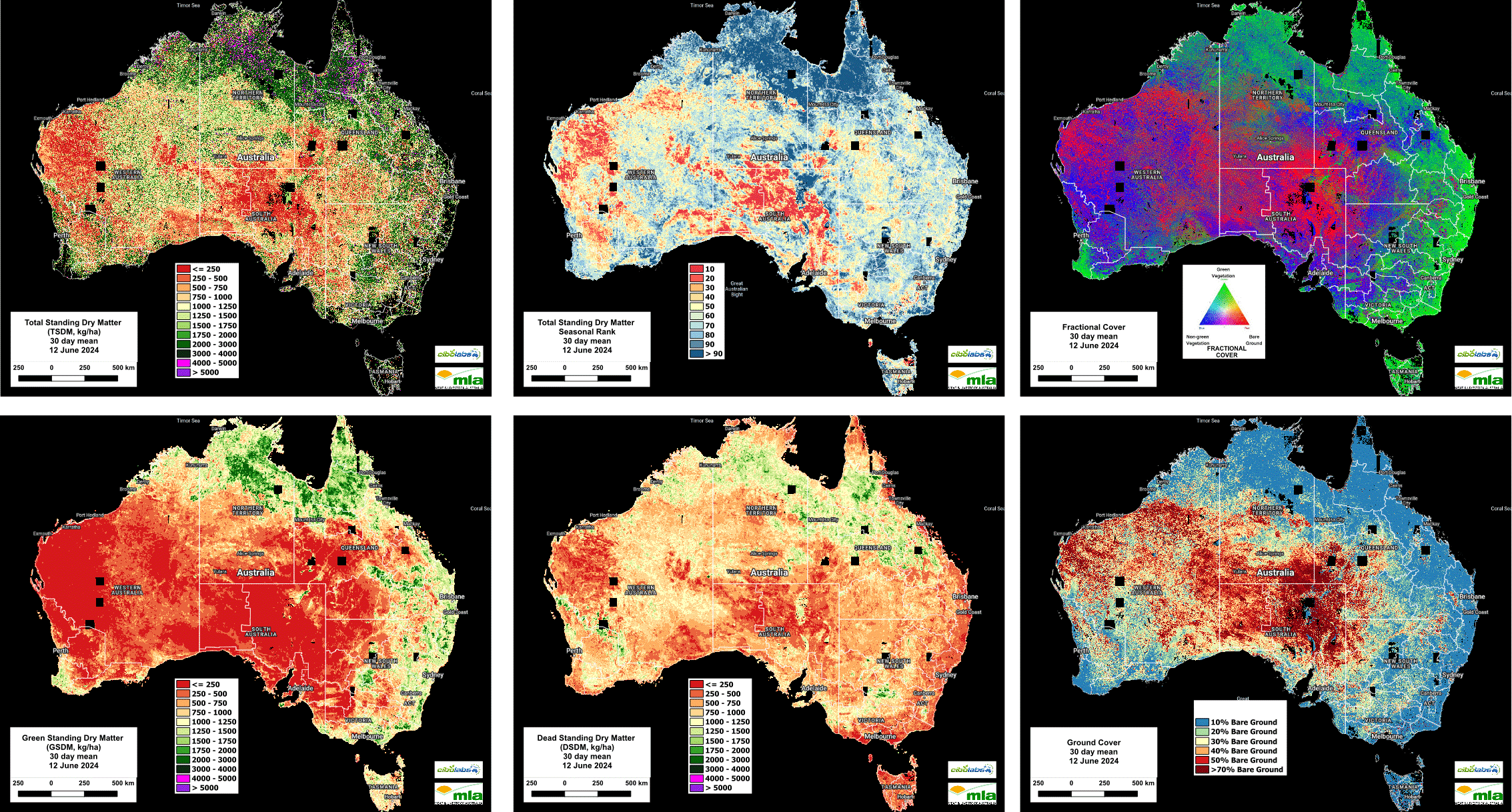
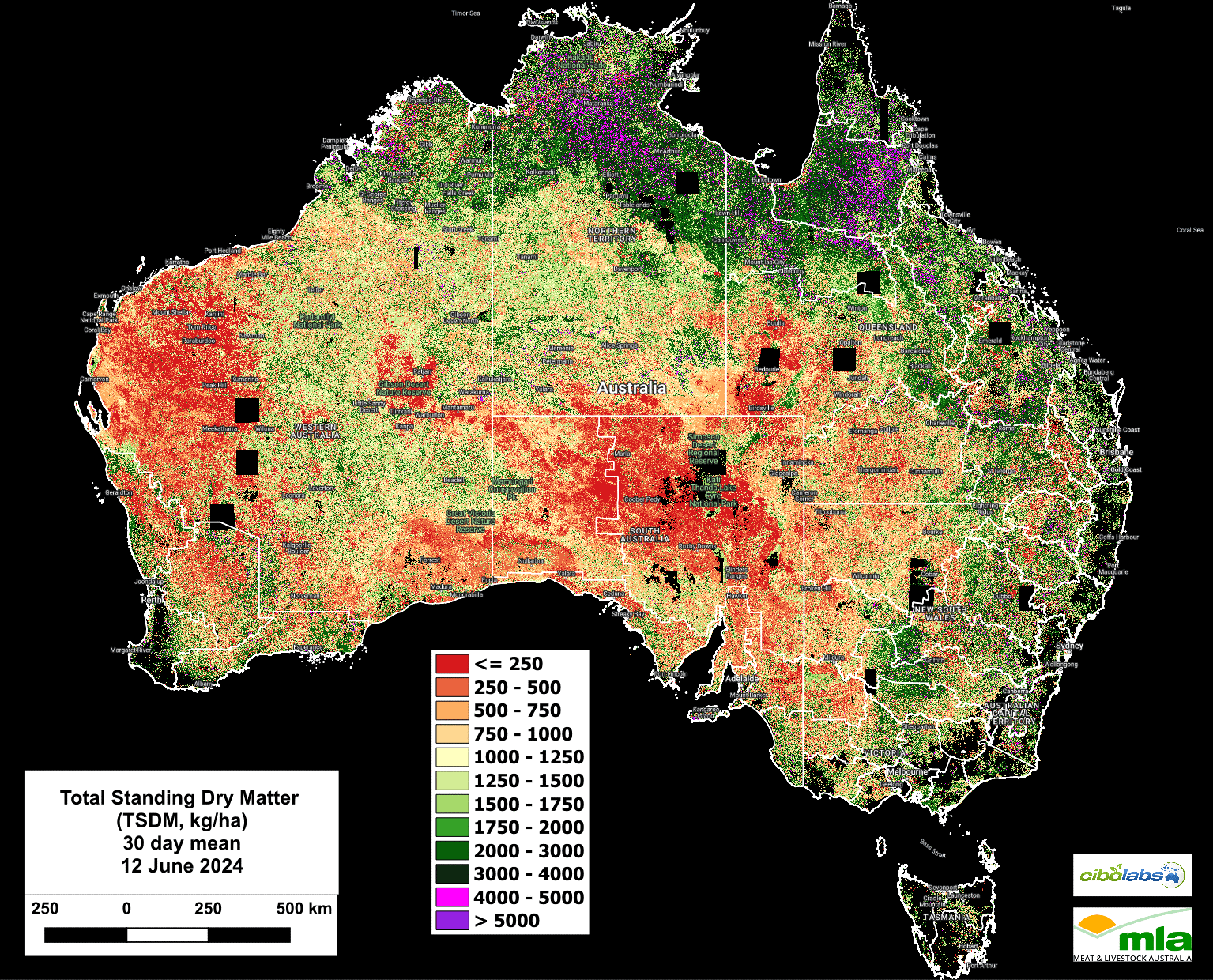
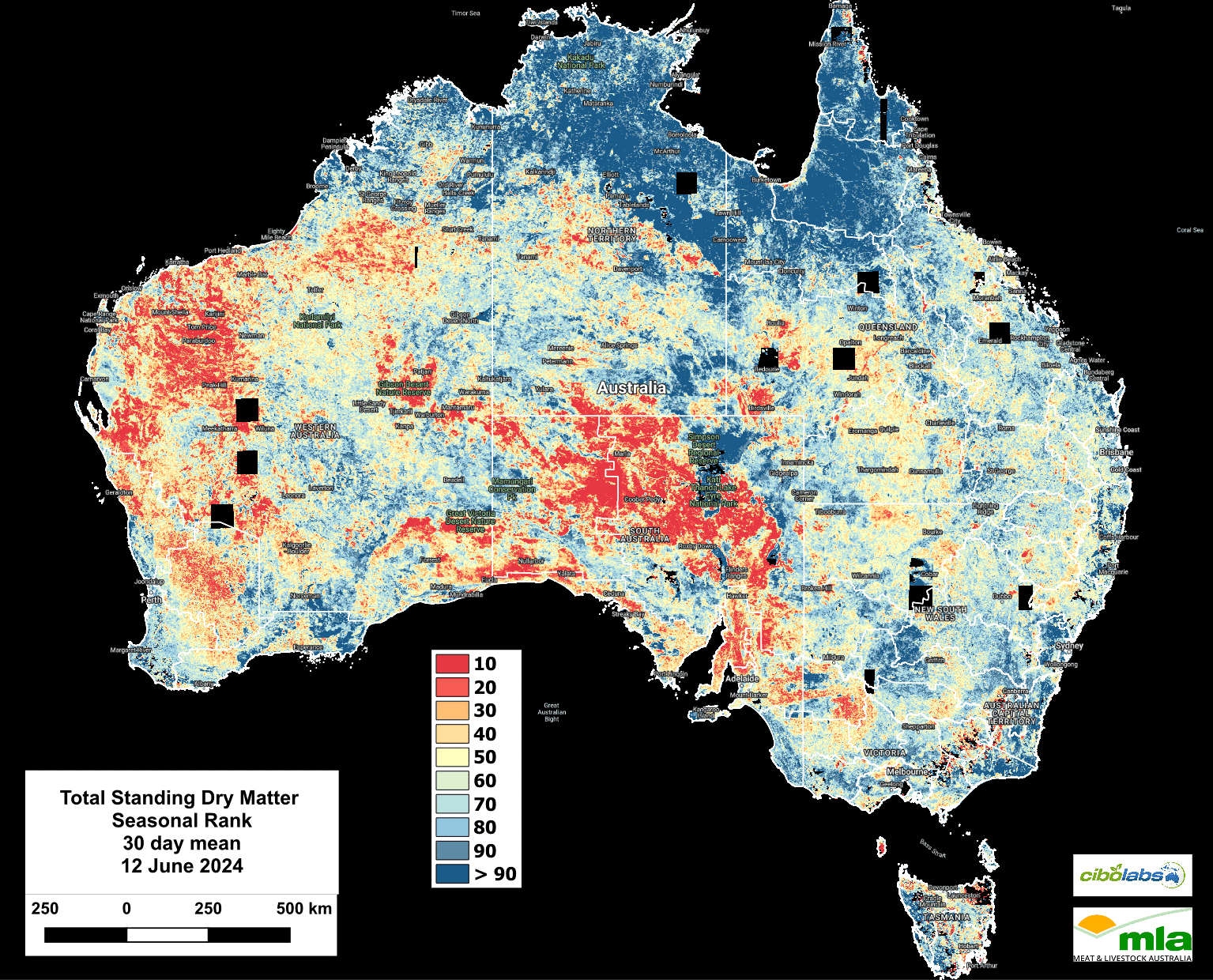
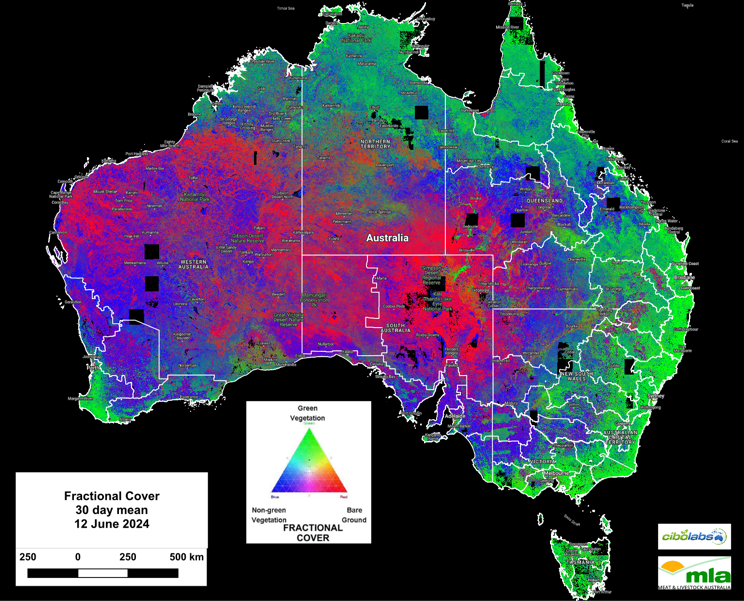
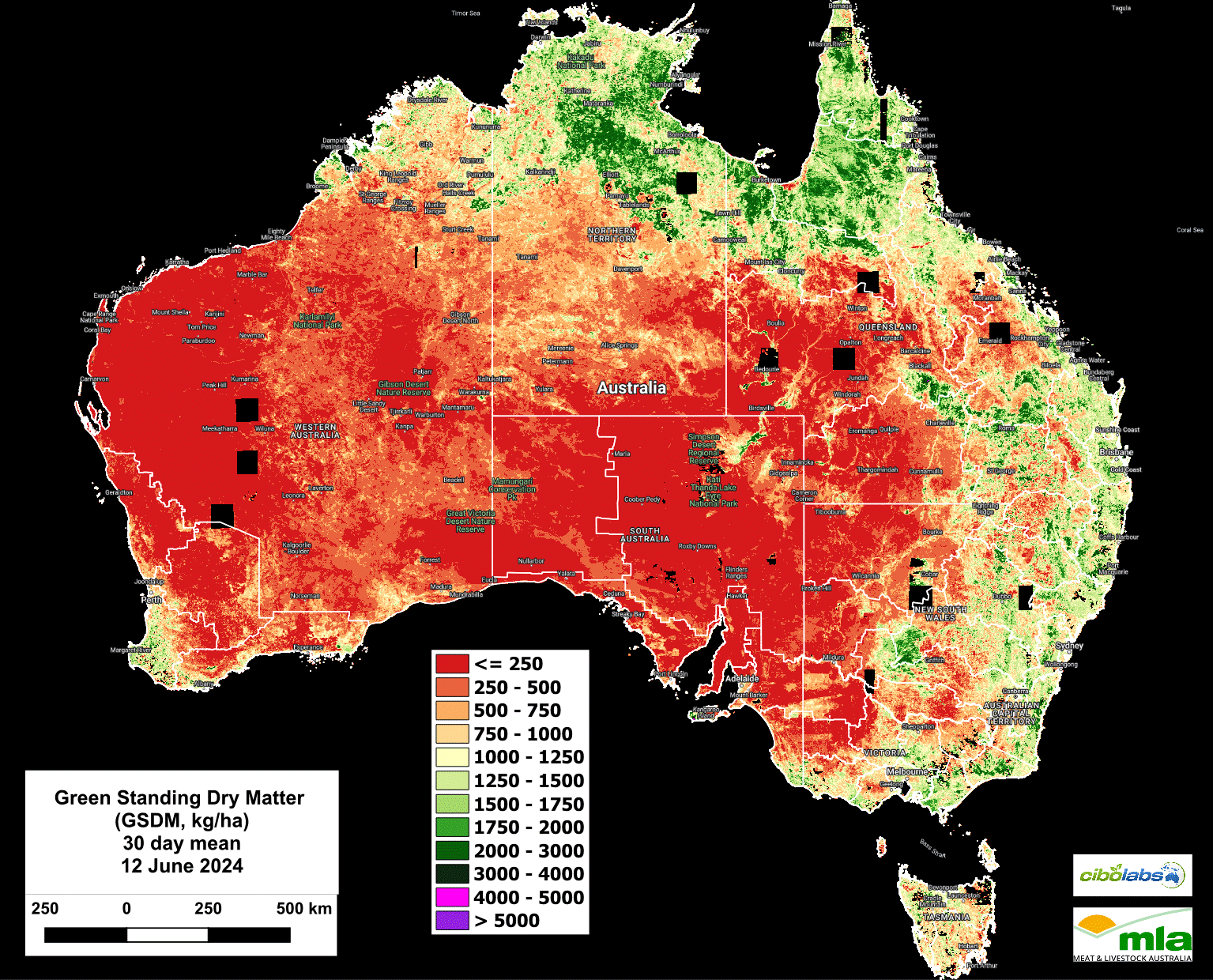
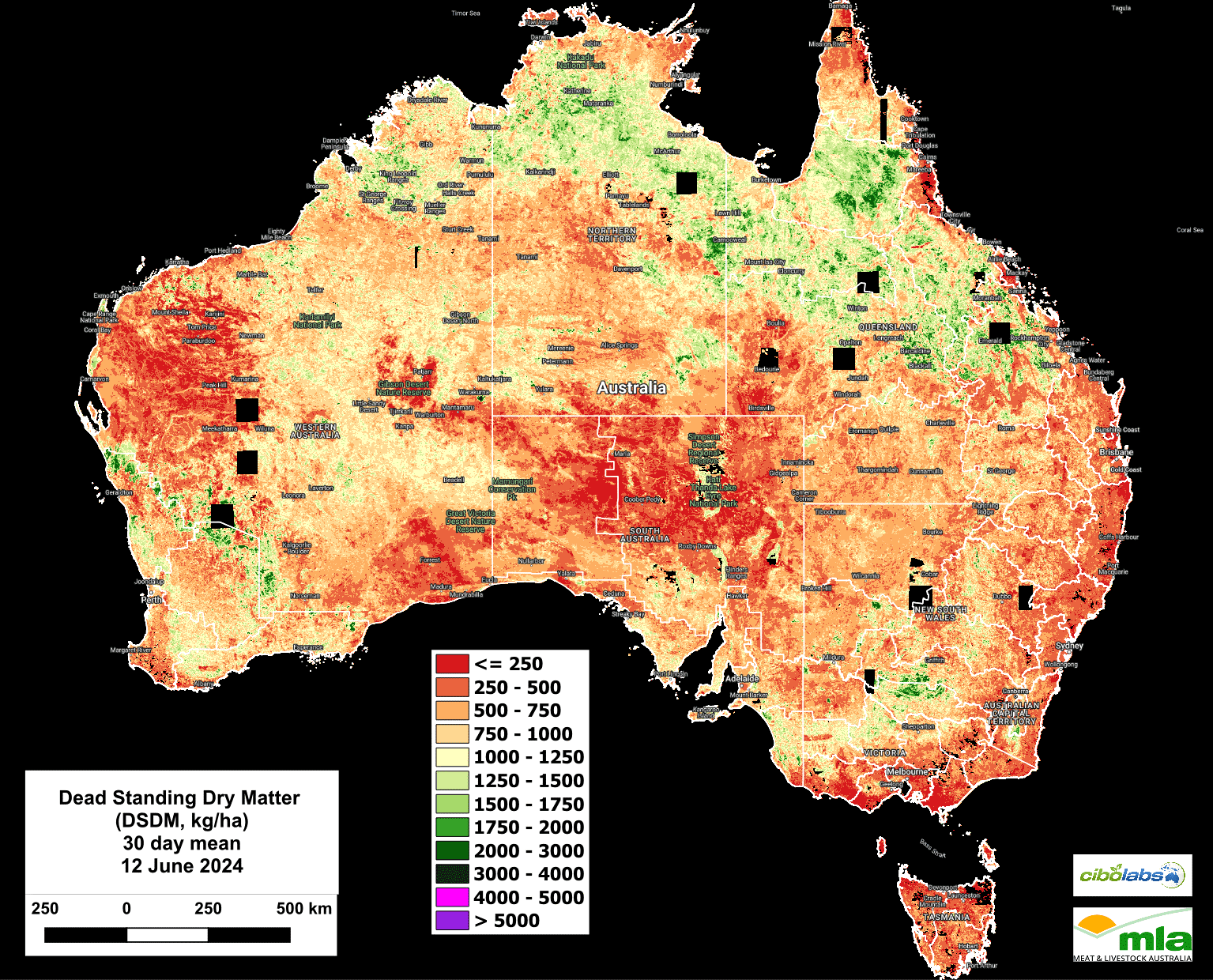
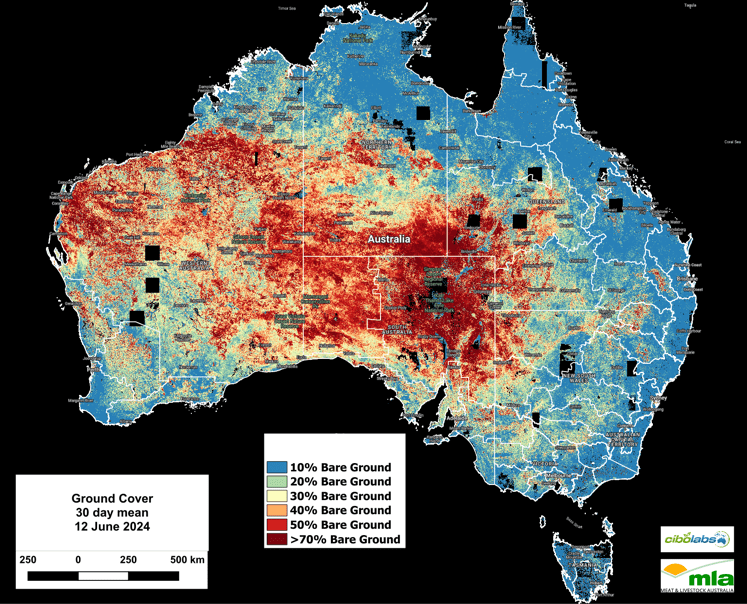
HAVE YOUR SAY